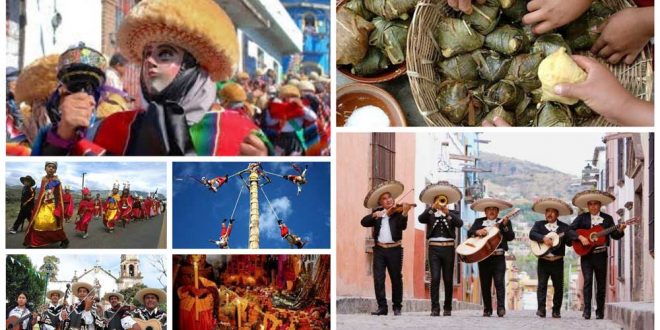Sitios mexicanos declarados
Patrimonio Mundial.
México es un país rico en muchos
sentidos, cuenta con una gran biodiversidad, hermosos lugares, deliciosa comida
y muchas costumbres y tradiciones, es por ese motivo que se encuentra dentro de
los primeros lugares en el continente Americano con más sititos declarados por
la UNESCO como Patrimonio Mundial y en séptimo lugar a nivel mundial.
Son 35 sitios en total divididos
en:
Ciudades y monumentos.
- Centro Histórico de México y Xochimilco, CDMX (1987)
- Centro Histórico de Oaxaca y zona arqueológica de Monte Albán, Oaxaca (1987)
- Centro Histórico de Puebla, Puebla (1987)
- Ciudad prehispánica de Teotihuacan, Estado de México (1987)
- Ciudad prehispánica y parque nacional de Palenque, Chiapas (1987)
- Ciudad histórica de Guanajuato y minas adyacentes, Guanajuato (1988)
- Ciudad prehispánica de Chichén Itzá, Yucatán (1988)
- Centro Histórico de Morelia, Michoacán (1991)
- Ciudad prehispánica de El Tajín, Veracruz (1992)
- Centro Histórico de Zacatecas, Zacatecas (1993)
- Pinturas rupestres de la Sierra de San Francisco, BCS (1993)
- Primeros monasterios del siglo XVI en las laderas del Popocatépetl (1994)
- Ciudad prehispánica de Uxmal, Yucatán (1996)
- Zona de monumentos históricos de Querétaro, Querétaro (1996)
- Hospicio Cabañas de Guadalajara, Jalisco (1997)
- Zona arqueológica de Paquimé (Casas Grandes), Chihuahua (1998)
- Zona de monumentos históricos de Tlacotalpan, Veracruz (1998)
- Ciudad histórica fortificada de Campeche, Campeche (1999)
- Zona de monumentos arqueológicos de Xochicalco, Morelos (1999)
- Misiones franciscanas de la Sierra Gorda de Querétaro (2003)
- Casa-Taller de Luis Barragán, CDMX (2004)
- Paisaje de agaves y antiguas instalaciones industriales de Tequila, Jalisco (2006)
- Campus central de la Ciudad Universitaria de la UNAM, CDMX (2007)
- Villa protectora de San Miguel El Grande y Santuario de Jesús Nazareno de Atotonilco, Guanajuato (2008)
- Camino Real de Tierra Adentro (2010)
- Cuevas prehistóricas de Yagul y Mitla en los Valles Centrales de Oaxaca (2010)
- Sistema hidráulico del acueducto del padre Tembleque, Edomex/ Hidalgo (2015)
Escenarios naturales:
- Sian Ka’an, Quintana Roo (1987)
- Santuario de ballenas de El Vizcaíno, BCS (1993)
- Islas y áreas protegidas del Golfo de California (2005)
- Reserva de la biósfera de la Mariposa Monarca, Michoacán/ Estado de México (2008)
- Reserva de la biósfera El Pinacate y Gran Desierto de Altar, Sonora (2013)
- Archipiélago de Revillagigedo (2016)
Patrimonio mixto
(cultural-natural):
- Antigua ciudad maya y bosques tropicales protegidos de Calakmul, Campeche (2002/ 2014)
- Valle de Tehuacán-Cuicatlán, Puebla y Oaxaca (2018)
Además, México cuenta con 7
patrimonios culturales inmateriales, que resguarda todo aquellos que no es
tangible, pero que por su valor debe ser preservado tal como:
- Las fiestas indígenas dedicadas a los muertos (2008)
- La ceremonia ritual de los Voladores (2009)
- Lugares de memoria y tradiciones vivas de los otomí-chichimecas de Tolimán: la Peña de Bernal, guardiana de un territorio sagrado (2009)
- La cocina tradicional mexicana, cultura comunitaria, ancestral y viva-El paradigma de Michoacán (2010)
- La pirekua, canto tradicional de los purépechas (2010)
- El Mariachi, música de cuerdas, canto y trompeta (2011)
- Los parachicos en la fiesta tradicional de enero de Chiapa de Corzo, Chiapas (2015)
México es un bello país si tienen
la oportunidad de visitarlo, conozcan algunas de estas partes que ofrece y no
se arrepentirán.





Que interesante y que orgullo para los mexicanos.
ResponderEliminar